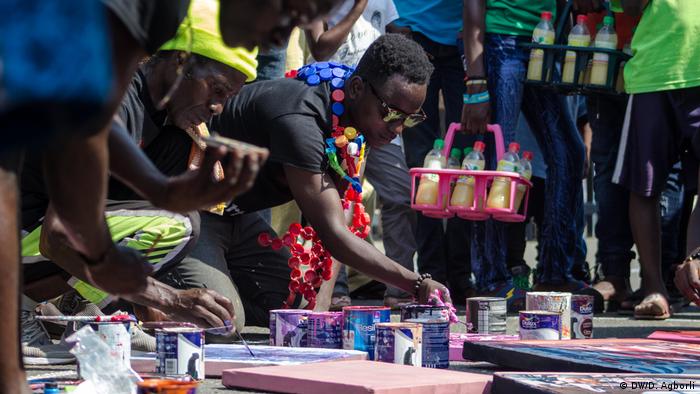East Africa is developing and becoming more dependent on itself. Opportunities to promote human development and sustainable economic progress are expanding. At the same time, regionally specific problems have now become constraining to solve and made the area more susceptible to adverse shocks.
Investment in the future of East Africa will need to be based on a strategy that prioritizes increased integration. Not forgetting collaboration, and cooperation among East African institutions and their partners will also be necessary to mitigate these vulnerabilities. It will also cause the region to achieve timely and permanent improvement throughout East Africa.
With a few notable exceptions, the economies of East Africa are among the fastest-growing in the world. With no doubt, the region is experiencing a technological revolution. This revolution is opening up enormous prospects in the fields of banking, medical, and business. Cross-border trade in labour and capital is accelerating.
Businesses in East Africa have easier access to both local and international markets. Many opportunities exist. Future regional stability and prosperity will be reliant on continuing regional integration under the direction of regional institutions, both as a means of fostering resilience and sustainable economic growth.
East Africa has the potential to become the next great economic success story in the world. Through unification and with the help of allies, particularly the US Government (USG) the East African region will continue to be an example. The long-standing movement in East Africa to unite disparate economies and tackle problems through teamwork is founded on the notion that market size, competition, and cooperation can all be used to spur development.
Since the 1990s, numerous organizations have backed regional integration in East Africa.
The continent has improved its connections to the international community and the global economy throughout the intervening years. The Common Market for Eastern and Southern Africa (COMESA), for instance, saw an increase in intra-regional trade from $15 billion in 2009 to $21 billion in 2014.
As a result, since 2008, exports from the East African Community (EAC) to the United States have increased by 29%. Despite this, there is still a long way to go before East African integration is complete.
Comparing intra-regional commerce to commercial blocs in Europe (60 percent) and Asia, which is at only 13 percent (40 percent).
The Infrastructure Master Plan (IRIMP) is portrayed as a bold strategy. The region’s growth and structural change will be accelerated by its implementation, according to AFDB.
The process of regional economic cooperation and integration will be greatly strengthened by the policy measures and infrastructural investments included in the IRIMP. It supports and advances the objectives of the Abuja Treaty. the national development plans of IGAD Member States, Agenda 2063, and the African Union Constitutive Act.
At its first inception in 1986, IGAD only dealt with issues related to desertification and drought. The regional organization expanded its scope to function as a development agency with successful involvement in peace and security in 1996 at the second foundation.
Still, the Intergovernmental Authority on Development (IGAD) Regional Infrastructure Master Plan (IRIMP), maps a path through the main Economic Development Corridors (EDCs). By the virtue that these corridors are now crossing borders, this is the beginning of IGAD’s third foundation. Economists say. It will force governments to adopt integrated policies and laws and dismantle outmoded notions of national protectionism.
Dissecting, then IRIMP Consultative Dialog’s inaugural forum, which took place in Entebbe, Uganda, in March 2020. We appreciate Uganda’s position between many areas and RECs, which provided the nation with a variety of experiences.
Earlier on in Entebbe, the Joint Steering Committee (JSC) reviewed the IRIMP Report. The purpose of the review was a ‘follow-up and build-up of the previous two events conducted through the year 2018 in Nairobi, and Mombasa. Then comes the consultative dialogue for civil society in Entebbe, in March 2020.
At the Entebbe conversation, Elsadig Abdalla, the IGAD Director for Economic & Regional Integration, stated that the forum had contributed useful information to improve the IRIMP for more efficient implementation. He noted that IGAD members were heavily invested in infrastructure, saying that “to date, member nations have invested approximately $20 billion in infrastructure development alone, before the implementation of IRIMP.”
“Corridor approaches to economic development have increasingly informed strategy and plans in Africa over the past 10-15 years; the latest AU thinking continues to refine and further develop this approach,” IPE Global Executive Director Jamie Andrew Simpson said during the Entebbe dialog on the IGAD master plan. According to Jamie Simpsons, they have identified important projects in the energy and transportation sectors with total costs ranging from six to ten billion US dollars, which will be invested gradually.
NGOs and the commercial sector from the IGAD states of Djibouti, Ethiopia, Kenya, Somalia, South Sudan, Sudan, and Uganda participated in large numbers in the Entebbe dialog. Eretria wasn’t there; the media repeatedly questioned her; the panel gave the same response, and there was nothing to be done but to hope that the leaders would meet and resolve the unresolved concerns. It is difficult to notice a family member is missing from your joyful occasions.
According to Zacharia Kingori, the IRIMP coordinator at IGAD, the region’s transportation sector, including roads, railroads, and water, will receive enough attention. “The current issue is that many IGAD member nations have poor roads, even though other IGAD countries have good transportation facilities,” he added.
The majority of the projects would be joint, according to Abdulrazaq Ali of African Consulting, who is a member of the team creating the master plan. “The effort will also assist streamline the financing of improvements in the country,” he added. added Abdulrazaq.
African and Global AID to EDCs in IGAD Region
In April 2013, Gadzeni Mulenga authored an AfDB study on economic corridors in Africa. The “Rationale for the Participation of the African Growth Bank” report states that the economic corridor technique “transforms transport corridors into engines of socio-economic growth.” The EDC strategy and its effects on areas along the corridors were addressed in the report.
The corridors’ strategy is described as one of “strong public-private partnerships, which support sustainability” in the study, which makes a point of highlighting the private sector’s contribution to the corridors.
This relationship should start with the design and building of the EDC, which raises concerns about economic rights and freedoms and the role of the private sector in Africa.
One of the strongest development projects on the continent is PIDA, the Programme of Infrastructure and Development in Africa, which was approved at the AU Summit in January 2012. GIZ is a collaborator with PIDA.
Market integration led to the merger of infrastructure and development. This may be observed in the Tripartite, which comprises the Common Market for Eastern and Southern Africa (COMESA), the East African Community (EAC), and the Southern African Development Community (SADC) (SADC).
Cross-border planning is the foundation of EDC; hence thorough data and information are crucial. Data on ports, railroads, ports, borders, and other EDCs nearby the three RECs are available via the Geographic Information System (GIS) on the internet.
The list of African corridors compiled by EENI Global Business School includes 19 corridors.
The graphic makes it easier to see how the corridors of the continent gave rise to new rivers. Numerous national and international organizations, like EENI, provide academic programs on African development.


